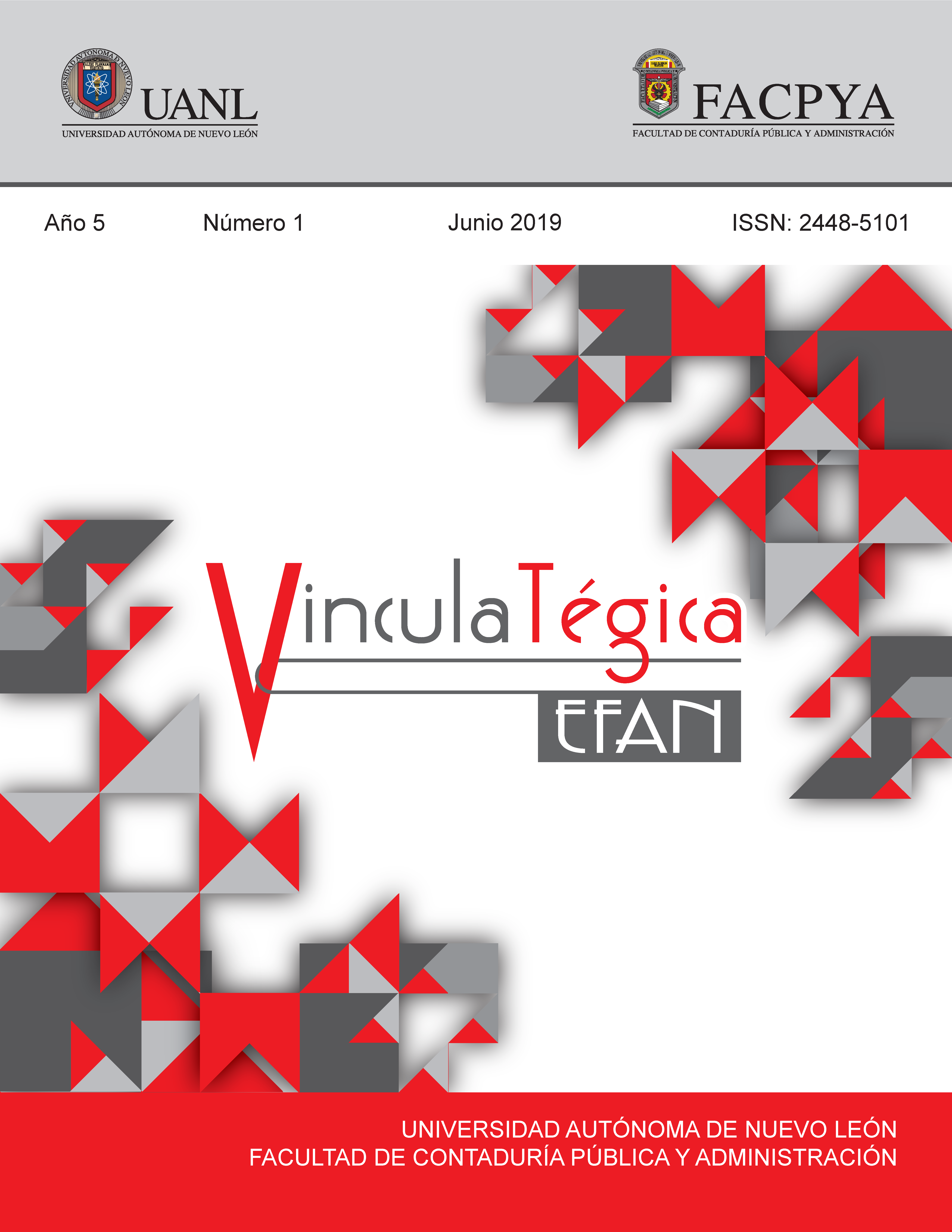Nivel de conocimiento de las Tecnologías Disruptivas en Educación Superior en estudiantes de la Universidad Autónoma de Nuevo León
DOI:
https://doi.org/10.29105/vtga5.1-941Keywords:
innovación disruptiva, educación superior digital, inteligencia artificial, robótica, realidad virtualAbstract
This study intends to analyze the level of knowledge of students of different faculties of the Autonomous University of Nuevo Leon in the Techniques of Disruptive Innovation such as Artificial Intelligence (AI), Virtual Reality (VR) and Augmented Reality (AR) as well as to know the use of collaborative platforms; the level of knowledge of the tools of Artificial Intelligence and the benefits of using disruptive techniques in the classroom in their learning processes. The participants were 155 students from different University departments. 57 % were male and 43 % were female. A scale was created whose name is “Knowledge of Disruptive Techniques in Education” consisting of 23 items with a Cronbach alpha of .807; the findings found in this research are very interesting and pertinent for the university authorities due to the relief of the proposed objectives.
Downloads
References
Baym, N. (2003). La emergencia de comunidad on-line. Barcelona: UOC.
Berger, R. (2016). España 4.0 El reto de la transformación digital de la economía. Roland Berger, 1, 1-54. Bain, K. (2007). Lo que hacen los mejores profesores de universidad (Trad. O. Barberá, 2ª ed.). Valencia: Universitat de Valencia.
Bain, K. (2005). Lo que hacen los mejores profesores de universidad. Traducido por Óscar Barberá. València, Publicacions de la Universitat de València, (1ª ed. inglesa 2004). 229 p.
Del Mar, A. (2006). Planificación de las actividades didácticas para la enseñanza y aprendizaje de la ciencia y tecnología a través de la Robótica pedagógica con enfoque CTS. Universidad Católica Andrés Bello, 1, 2-55.
Fombona, J., & Pascual, M., & Ferreira, M. (2012). Realidad aumentada, una evolución de las aplicaciones de los dispositivos móviles. Pixel-Bit. Revista de Medios y Educación, (41), 197-210.
Jones, Q. (1997). Virtual-communities, virtual settlements & cyber-archaeology: A theoretical outline. Journal of Computer-Mediated Communication, 3, 1-24. DOI: https://doi.org/10.1111/j.1083-6101.1997.tb00075.x
Margalef, L., & Arenas, A. (2006). ¿Qué entendemos por innovación educativa? A propósito del desarrollo curricular. Perspectiva Educacional, Formación de Profesores, (47), 13-31.
Mendoza, M., Cruz, R., Villalba, A., Calderón, J. & Arreola, E. (2017). Aplicación de realidad aumentada para la enseñanza de robótica. Pistas educativas, 127, 340-353.
Zaltman, G. Duncan, R. & Iiolbek, J. (1973). Innovations and Organizations. New York: J. Wiley & Sons.
Castells, M. (2001). Internet y la sociedad red. Madrid: UOC.
Fogel, L., Owens, L., & Walsh, M. (1966). Artificial Intelligence through simulated evolution. New York: John Wiley and Sons.
Pilonieta, G. (2006). Evaluación de competencias básicas del docente. Bógota: Magisterio.
Rose, G. (2016). The fourth industrial revolution. A Davos Reader. New York: Foreign Affairs.
Ruiz-Velazco, E. (2007). Educatrónica. Innovación en el aprendizaje de la ciencia y tecnología. Madrid: Ediciones Díaz de Santos.
Siemens, G. (2006). Conociendo el conocimiento. Estados Unidos: Ediciones Nodos Ele.
Christensen, C., Raynor, M., McDonald, R. (2015). What is disruptive Innovation? 20 marzo 2019, de Harvard Business Review. Recuperado de: http://hbr.org/2015/12/what-isdisruptive-innovation
Isabel, S. (2019). 4 tecnologías disruptivas para la Educación Superior que debes conocer. 18 Marzo 2019, de u-planner Recuperado de: https://www.u-planner.com/es/blog/4-tecnologias-disruptivas-para la-educacion-superior
Schwab, K. (2015). The Fourth Industrial Revolution What It Means and How to Respond. 19 Marzo 2019, de Foreign Affairs. Recuperado de: https://www.foreignaffairs.com/articles/2015-12-12/fourth industrial-revolution
Schwab, K. (2016). The fourth industrial revolution. 18 marzo 2019, de World Economic Forum. Recuperado de: https://www.weforum.org/about/the-fourth-industrial-revolution-by-klaus-sc
UNESCO. (2019). Educación superior digital. 19 marzo 2019, de la UNESCO. Recuperado de: https://es.unesco.org/themes/educacion-superior/digital 536
UCE Ciencia. Revista de postgrado, 6(3), 2018 Zapata-Ros, M. (2013). Innovaciones disruptivas. Redes Abiertas. (2013). Recuperado de: http://redesabiertas.blogspot.com/2013/05/innovaciones disruprivas.html Las tecnologías disruptivas en la Educación Superior Juan Pedro Febles Rodríguez
Zapata, M. (2013). Innovaciones disruptivas. Redes Abiertas. Recuperado de: http://redesabiertas.blogspot. com/2013/05/innovaciones-disruprivas.htm
Downloads
Published
How to Cite
Issue
Section
License

This work is licensed under a Creative Commons Attribution 4.0 International License.
a). Authors keep copyright and give the journal the right of the first publication of the work under a Creative Commons attribution license. This license allows others to share the work as long as original authorship and initial publication in this journal is acknowledged.
b). Authors may make other independent and additional contractual agreements for the non-exclusive distribution of the version of the article published in this journal (e.g., include it in an institutional repository or publish it in a book) as long as they clearly indicate that the work was published for the first time in this journal.







